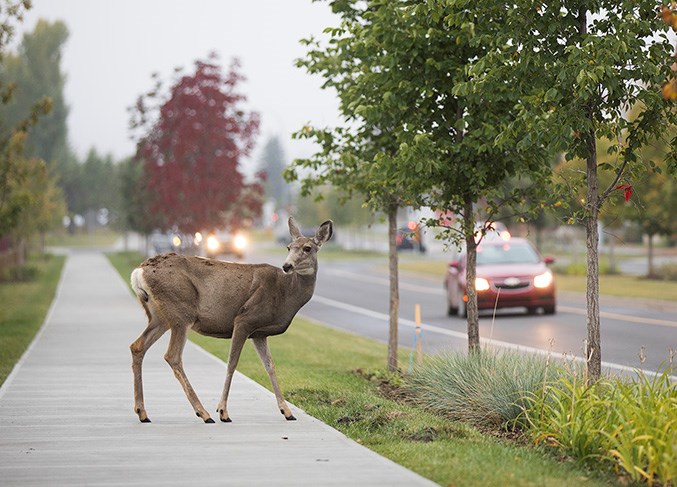With tick season in full swing, a thriving local deer population and Lyme disease on the rise in Canada, tick bite prevention and treatment awareness takes priority.
While Lyme disease, caused by Borrelia burgdorferi bacteria spread through tick bites, is more common in the United States than Canada, the Public Health Agency of Canada had over 700 cases of Lyme disease reported in 2015, up from only 130 in 2009.
Albertans have less cause for worry than the East Coast provinces, according to the Alberta government website, which states the risk of getting Lyme disease from a tick bite in Alberta is “very low,” as most ticks found in Alberta do not carry the disease.
“I’m not aware of a tick issue at all in Okotoks,” said Christa Michailuck, parks manager for the Town. “Our parks team is working outside every day and I’m not aware of any tick issues that our own staff has experienced, and we’ve got people working in trees and shrubs daily.
“It doesn’t seem like it’s a big issue here, from our perspective in parks.”
The Alberta government instituted a passive surveillance program in 2007 where ticks found by the public on companion animals such as dogs and cats are voluntarily submitted by veterinarians for testing by the Alberta Health Services (AHS) Environmental Health offices.
Since the start of the surveillance program, the number of blacklegged ticks submitted by Albertan’s has tripled, but the proportion of ticks tested positive for B. burgdorferi has not increased. This evidence implies these ticks are “not reproducing in Alberta.”
Big Rock Animal Clinic sent 12 ticks for testing so far this year, and none have been positive for Lyme disease. The clinic clarified this number only represents the animals brought into them and there could be many more that are either not found or taken care of by the owners.
However, there appears to be more ticks this year than last based on the clinic’s numbers.
They have also seen more incidences of pets getting ticks in their own backyards.
Dr. Rick Dalrymple, veterinarian and owner of Big Rock Animal Clinic, said most tick cases they see at the clinic are people who live in the country and their pets are out in the brush.
However, the first two cases this year were dogs that are only outside in backyards or in Calgary.
He said the presence of ticks inside the community is likely due to the deer population.
The Alberta government website (Alberta.ca) states that Lyme disease can be resolved successfully with early identification and antibiotic treatment. Serious, long-term complications are a risk primarily if left untreated.
Early symptoms include a round, red rash—known as a bull’s eye rash—that spreads from the bite site and flu-like symptoms.
While ticks can carry other diseases, their incidence is even lower than Lyme disease. Alberta Health Services (AHS) says quick removal limits the chance of spreading disease, regardless of the type.
Ticks live in wooded and grassy areas. Suggestions for avoiding tick bites include covering as much skin as possible when in these areas, tucking pants into socks and wearing light-coloured clothes so ticks are easier to spot.
Bug sprays containing DEET work to repel ticks as well.
After being outside, perform a tick check on yourself, children and pets. If you find a tick, remove it with tweezers by grasping the head as close to the skin as possible and pulling it straight out.
AHS requests that ticks be placed in a clean, empty pill bottle or plastic bag with a small piece of moist tissue and submitted to Environmental Public Health for bacterial testing.
For more information on ticks and Lyme disease go to myhealth.alberta.ca or call Health Link at 1-866-408-5465.




